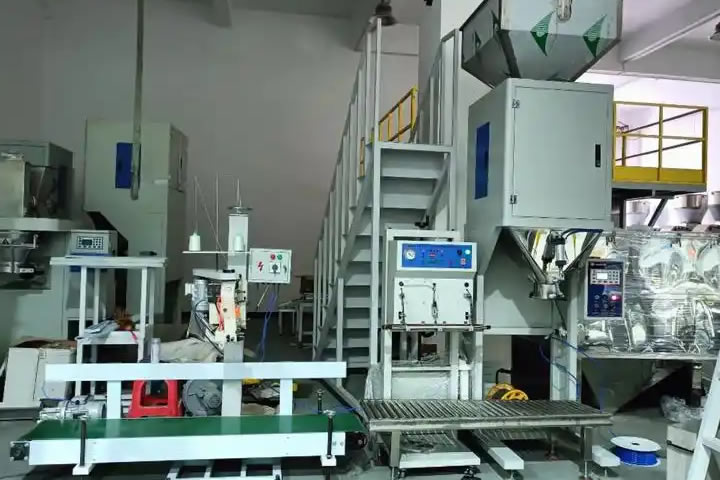In the century-old spice factory at the junction of Sichuan and Yunnan, the workshop mixed with the aroma of pepper and grass fruit is undergoing a silent transformation. The three-generation factory manager Zhou stared at the piled-up return boxes - the problem of "uneven mixing of star anise and chili powder" complained by customers made this old brand almost miss the opportunity under the pre-prepared food trend. Until the arrival of the customized bagged granule packaging machine, the dialogue between traditional crafts and intelligent manufacturing was opened.

"If the particle size difference of star anise petals in the mixture exceeds 3mm, the machine will get stuck." Technician Xiao Yang pointed to the raw materials rolling in the vibrating screen. The multi-stage screening module of the bagged granule packaging machine solves the core pain point: the front laser particle size analyzer monitors the raw materials in real time. When oversized particles are detected, the diverter valve automatically guides them into the crusher for re-melting. This system has increased the raw material utilization rate of a certain hot pot base from 67% to 93%. Director Zhou touched the re-packaged sample and sighed: "The machine is more sharp than the master's eyesight."
Production supervisor Lao Li remembers the emergency order the most. A chain restaurant suddenly added 5 tons of Dai-style marinade and required 72 hours of delivery. After the "elastic mode" of the bagged granule packaging machine is enabled, the equipment automatically increases the production capacity from the conventional 200 bags/minute to 280 bags/minute, and the sealing temperature is simultaneously increased by 2°C to meet the speed increase requirements. "It's like giving the machine an adrenaline shot," Lao Li smiled as he looked at the finished products coming out in a line, "but their heartbeat (vibration frequency) is still stable." This battle made the factory's rating in the customer supply chain directory jump two levels.
The notebook of quality inspector Xiao Zhang records the transformation trajectory: in the first month of introducing the equipment, the damage rate of compound seasoning packaging dropped sharply from 5.2% to 1.7; three months later, this figure became 0.8%. The secret lies in the adaptive pressing system of the bagged granule packaging machine - when fine particles such as chili powder are detected, the sealing pressure is automatically reduced by 15% to avoid powder leakage; and when encountering coarse particles such as cardamom, the pressure value is adjusted back to ensure sealing. This dynamic adjustment ability has reduced the annual return volume of a certain stew package containing eight spices by 37 tons.
The factory building in the twilight is filled with the smell of freshly fried spices, and the indicator light of the bagged granule packaging machine flashes regularly in the haze. Director Zhou stood on the observation deck overlooking the production line, and just received an invitation for factory inspection from Southeast Asian merchants on his mobile phone. Those mixed packaging problems that once gave the old masters a headache have now turned into parameters jumping on the equipment panel, continuing the legend of the symbiosis of "old taste" and "new technology" in the southwestern border.

